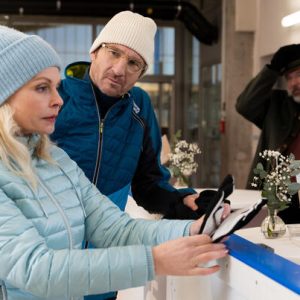**Spoiler Alert: Major plot points for numerous episodes of “Rosenheim-Cops” revealed below.**
The seemingly innocuous staircase leading to the “first floor” in the Rosenheim-Cops series isn’t just a set piece; it’s a recurring, almost meta-textual element that reflects the cyclical nature of crime and the steadfast predictability (and comforting familiarity) of the show’s narrative structure. For long-time viewers, this staircase represents far more than mere architecture. It’s a shorthand for the series’ comfortable predictability, a visual cue signaling the familiar rhythm of investigation, red herrings, and eventual resolution that makes “Rosenheim-Cops” the comforting, low-stakes crime drama that it is.
Think of it this way: the staircase acts as a visual transition point in numerous episodes. We see the cops ascending it countless times, often following a lead, heading for an interrogation, or simply moving between the various locations within the precinct that are central to the plot. Each ascent signifies a progression in the investigation, a step closer to unraveling the mystery. However, the familiarity of the staircase also subtly foreshadows the comforting familiarity of the resolution. We know, instinctively, that even amidst the twists and turns, the case will ultimately be solved, and the “good guys” will prevail.
The staircase, therefore, becomes a symbolic representation of the formulaic, yet satisfying, plot structure of the show. Consider, for example, the countless cases involving seemingly unrelated events that ultimately intertwine on that very staircase, with the crucial clue or witness appearing just as our investigators reach the top, symbolically representing the culmination of their efforts. It’s a recurring visual motif that signifies the coming together of disparate threads in the narrative, highlighting the show’s reliance on interconnected plots and the predictable, yet enjoyable, way those plots resolve.
This isn’t to say that the “Rosenheim-Cops” series lacks surprises; each episode introduces new characters, unique crimes, and intriguing mysteries. However, the constant presence of the staircase serves as a subtle reminder that despite the novelty of each case, the overarching structure remains consistent. The familiar setting of the precinct, with its well-worn stairs, reinforces the show’s comforting predictability, ensuring the audience knows what to expect – a steady ascent towards a satisfying conclusion, much like climbing those very stairs to the “first floor.”
In fact, the staircase’s ubiquity becomes almost comical in its consistency. It’s almost as if the writers intentionally use it as a visual reminder of the show’s self-aware predictability, a playful wink to the audience acknowledging the familiar formula. The staircase becomes less of a prop and more of a meta-commentary on the entire series. It’s a symbol of the reliability and consistent quality that define “Rosenheim-Cops” – a place where viewers can repeatedly ascend the stairs of investigation, knowing that, like clockwork, they’ll reach the “first floor” of resolution. The seemingly mundane staircase is thus elevated to a crucial, albeit often unnoticed, element in the show’s visual storytelling, signifying the comforting predictability and familiar resolution that have endeared “Rosenheim-Cops” to its loyal fanbase.





